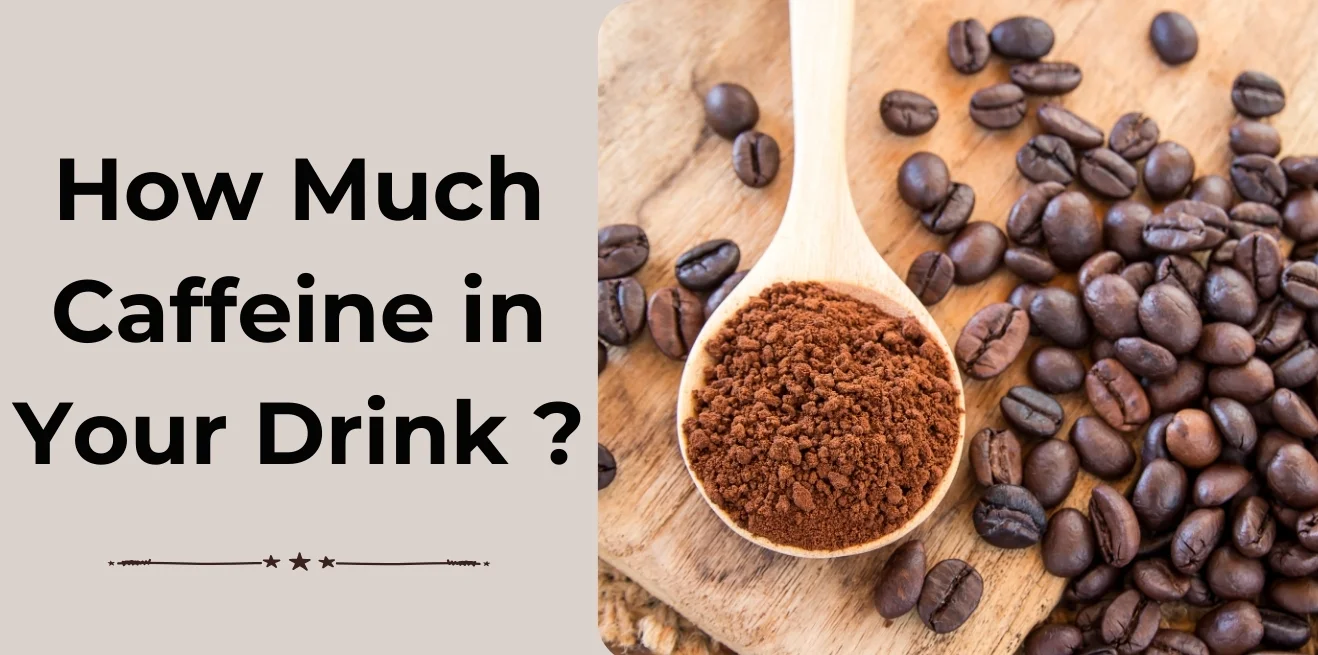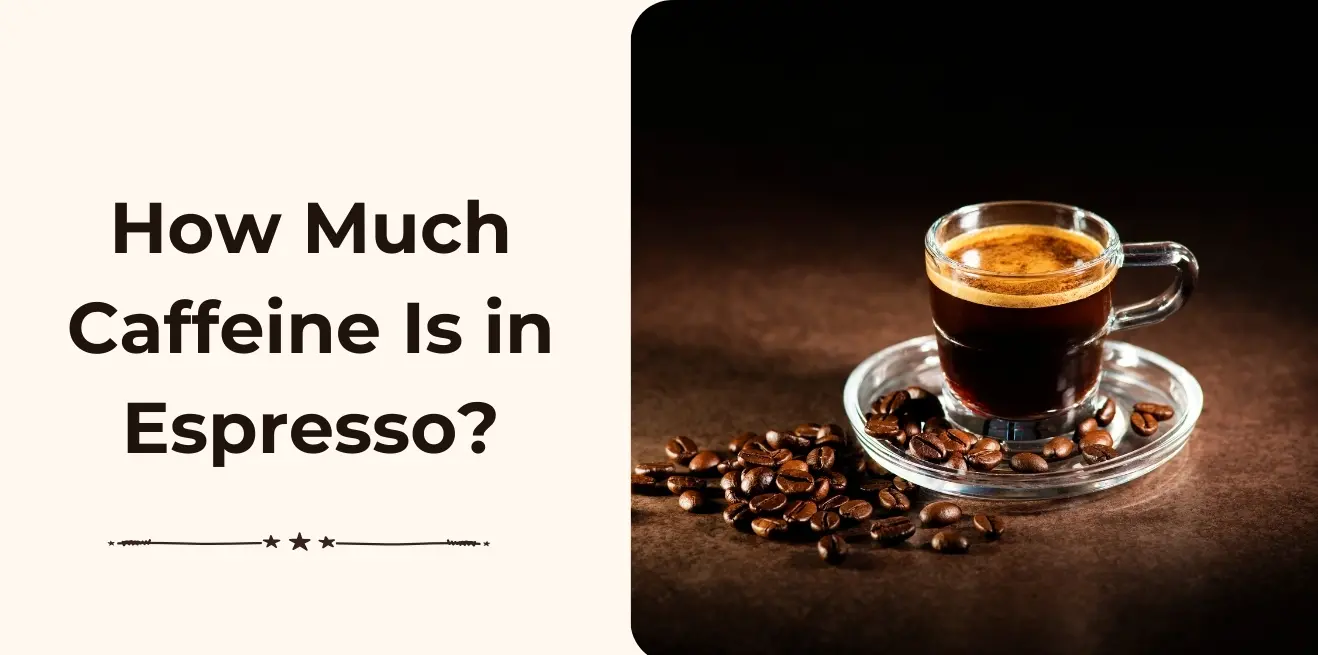Caffeine is one of the most widely used ingredients in the world. To know How much Caffeine is in your drink is important because People use it everyday to wake up, stay focused, and get through long hours at work or school. They are consuming caffeine in different drinks like coffee, tea etc.
There is a misunderstanding that most people think that caffeine is only in coffee, but the truth is that it is found in many other drinks. You’ll see it in tea, soda, energy drinks, and even chocolate milk. And the amount of caffeine in these drinks can be surprisingly different. Some contain just a few milligrams while Others can have as much caffeine as three or four cups of coffee.
Understanding your caffeine intake matters. Having too much can affect your sleep, raise anxiety, and leave you feeling jittery. Knowing what’s in your drink helps you stay within healthy limits, especially if you enjoy multiple caffeinated drinks each day.
In This Article we will cover Everything Related to Caffeine in your Drinks. We will Explore about:
- Coffee in all its forms: brewed, espresso, instant, and even decaf. You’ll find detailed info in articles like How Much Caffeine Is in Espresso?, Cold Brew vs Hot Brew: Which Has More Caffeine?, and Does Decaf Coffee Have Caffeine?
- Tea, including black, green, matcha, and herbal types. For comparisons and caffeine levels, see guides like Caffeine in Black, Green, White & Oolong Teas and Matcha vs Green Tea: Caffeine Compared
- Energy drinks, from well-known brands to high-caffeine options like Bang and Reign. We’ll look at how drinks like Monster and Red Bull measure up.
- Sodas like Coke, Pepsi, Mountain Dew, and others. You may be surprised how much caffeine is hiding in soft drinks like Dr Pepper or Baja Blast
- Chocolate milk, cocoa, and other overlooked drinks that still contain caffeine
How Much Caffeine Is in Your Drink?
1. Caffeine in Coffee-Based Drinks

Coffee is the most popular source of caffeine in the world. For many people, it’s the first thing they drink in the morning—and sometimes the last thing keeping them going in the afternoon. Whether it’s a brewed cup from home, a fancy espresso from a local café, or an instant coffee mix stirred into hot water, coffee plays a big role in how we get our daily caffeine.
But not all coffee drinks are created equal. The amount of caffeine in your cup depends on a few key things: how the coffee is brewed, what kind of beans are used, how much you’re drinking, and even where you buy it.
How Brewing Method Affects Caffeine
One of the biggest factors in caffeine content is the brewing method.
- A standard 8-ounce cup of drip coffee can have anywhere from 80 to 140 milligrams of caffeine, depending on how strong the coffee is and how much ground coffee was used.
- In general, the longer the coffee steeps and the finer the grind, the more caffeine you’ll end up with.
Espresso, on the other hand, has a smaller serving size but packs more caffeine per ounce.
- A single shot may only be one ounce, but it can contain around 63 milligrams of caffeine.
- Because of this, espresso-based drinks like lattes or cappuccinos can still add up quickly—especially if you’re drinking a double or triple shot.
- If you’re curious how espresso compares to regular coffee, our guide on caffeine in espresso explains why that tiny shot hits so hard.
Cold brew is another popular option, and it’s known for being especially strong.
- Since cold brew coffee is steeped in cold water for many hours, it often ends up with a higher caffeine concentration than hot-brewed coffee.
- Depending on how it’s made, a 16-ounce serving of cold brew can easily contain over 200 milligrams of caffeine.
- For people trying to choose between cold and hot coffee, it helps to understand how caffeine levels change between cold brew and hot brew.
Instant coffee is a quicker option for people on the go.
- You just add hot water and stir.
- While it’s convenient, the caffeine content is usually lower compared to fresh-brewed coffee.
- Most instant coffee contains around 60 to 80 milligrams of caffeine per cup.
- That said, it can still vary by brand. For a closer look at how it measures up, you can learn more about caffeine in instant coffee and how different brands compare.
How Roast and Beans Change the Taste ?
There’s a common belief that darker roasts have more caffeine because of their bold taste, but that’s not true. In fact, lighter roasts usually retain more caffeine because they’re roasted for a shorter time. The difference isn’t huge, but if you’re trying to maximize or limit your intake, it’s something to keep in mind.
The type of coffee bean also makes a difference. Arabica beans are the most commonly used and have a smoother flavor with slightly less caffeine. Robusta beans, which are often used in cheaper or stronger blends, have almost twice the caffeine content. You might not notice it in a single cup, but over time, those differences add up.
How Serving Size of Coffee Matter ?
Serving size is another huge factor. A small 8-ounce cup of brewed coffee may feel mild, but ordering a 20-ounce cold brew from a coffee shop can send your caffeine levels soaring. For example, a “venti” cold brew from Starbucks can contain over 300 milligrams of caffeine—more than three shots of espresso.
Speaking of Starbucks, it’s helpful to understand how much caffeine is in their drinks, especially if you order different sizes or try limited-time options. Their menu includes detailed caffeine amounts, which vary by size and drink type. If you’re a regular customer, it’s worth checking out how much caffeine is in Starbucks coffee across the full range of drinks.
You can Also Read Do Starbucks Refreshers Contain Caffeine
What About Decaf?
Many people switch to decaf thinking it’s completely caffeine-free—but that’s not the case. Decaffeinated coffee still contains a small amount of caffeine, usually between 2 and 7 milligrams per cup. It’s much less than regular coffee, but it’s still something to consider if you’re avoiding caffeine altogether. You can learn more about how much caffeine is in decaf coffee and why it’s not 100% free of stimulants.
Summary of Common Coffee Types and Their Caffeine Ranges
Here’s a quick comparison of caffeine levels in popular coffee styles:
- Brewed coffee (8 oz): 80–140 mg
- Espresso (1 oz): ~63 mg
- Cold brew (16 oz): 150–300+ mg
- Instant coffee (8 oz): 60–80 mg
- Decaf coffee (8 oz): 2–7 mg
2. Caffeine in Tea & Matcha
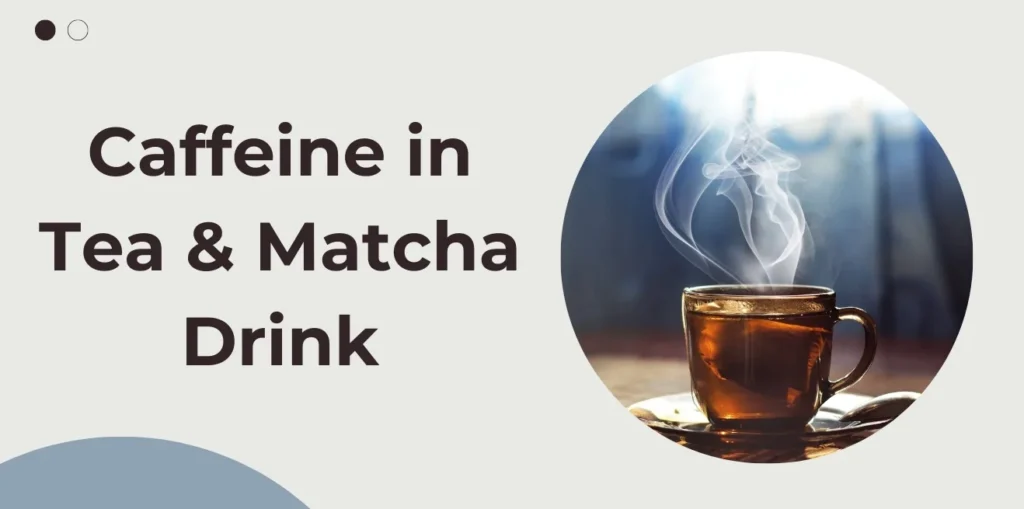
Tea is the second most popular source of caffeine after coffee, and it’s often seen as a lighter, calmer alternative. But not all tea is low in caffeine. In fact, depending on the type, some teas can give you nearly as much caffeine as a cup of coffee. What makes it tricky is that caffeine levels in tea depend on several things—like the kind of tea leaves, how long you steep them, and even the water temperature.
The type of tea you drink is the biggest factor. Black tea generally has the most caffeine among traditional tea types. Green and oolong teas have a bit less, while white tea is usually the lightest. Herbal teas are in a different category—most of them don’t contain any caffeine at all because they’re not made from the tea plant.
If you’re curious about how these different types stack up, our guide on caffeine in black, green, white, and oolong teas explains the main differences and what to expect from each one.
Caffeine Levels by Tea Type
Here’s a simple look at how much caffeine is typically found in 8 ounces of each type:
- Black tea: 40–70 mg
- Oolong tea: 30–50 mg
- Green tea: 20–45 mg
- White tea: 15–30 mg
- Herbal tea: 0 mg (in most cases)
Even within these ranges, there’s a lot of variation. A strong black tea steeped for five minutes will have more caffeine than a lightly brewed green tea steeped for two. If you want a broader overview, you can read more about how much caffeine is in tea across all the major types.
What Makes Matcha Different?
Matcha is often grouped with green tea, but it’s actually quite different. Unlike regular green tea—where you steep leaves and then throw them out—matcha is made from whole tea leaves that are ground into a fine powder. When you drink matcha, you’re consuming the entire leaf, which means you’re getting more caffeine per cup.
A typical serving of matcha can have between 60 and 80 milligrams of caffeine, which puts it in the same range as a small cup of coffee. Because of its steady energy release and the presence of L-theanine (an amino acid found in tea), many people say matcha gives them a calmer focus without the jitters.
If you’re trying to decide between these two green tea options, our article comparing matcha and regular green tea breaks down the caffeine difference and how they make you feel.
Brewing Factors That Affect Caffeine
Even if you stick with one type of tea, how you make it can change how much caffeine ends up in your cup.
Here are a few key factors:
- Steep time: Longer steeping releases more caffeine
- Water temperature: Hotter water pulls more caffeine from the leaves
- Leaf size and quality: Whole leaf teas tend to release caffeine slower than broken leaf or bagged teas
- Serving size: A 12-ounce mug will naturally have more caffeine than a small teacup
If you drink multiple cups throughout the day, these small differences can really add up.
What are Herbal Teas?
Herbal teas are not technically “tea” since they don’t come from the Camellia sinensis plant, which is what black, green, white, and oolong teas all come from. Instead, they’re made from dried flowers, roots, herbs, or fruit blends. Most herbal teas are completely caffeine-free, which makes them a great choice if you want to avoid caffeine in the afternoon or evening.
That said, a few herbal blends can contain added green or black tea, so it’s always a good idea to check the label. For a full breakdown of which herbal teas are truly caffeine-free, take a look at our guide to herbal tea and caffeine.
3. Caffeine in Energy Drinks
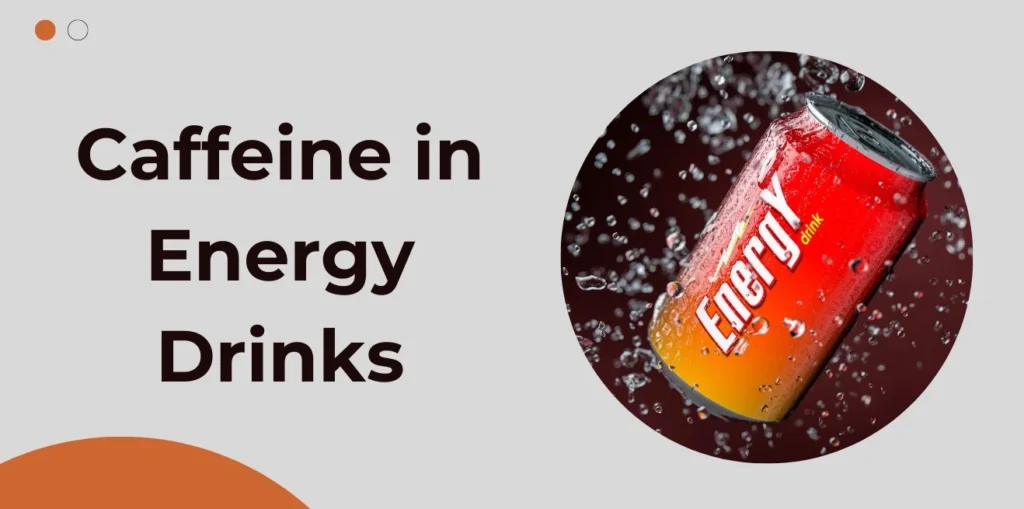
Energy drinks have become a Quick Option for people who need a quick and powerful boost. Whether you’re working a night shift, hitting the gym, or staying up late to finish a project, these drinks are designed to keep you alert. What makes them different from coffee or tea is not just the amount of caffeine—but the extra ingredients that often come along with it.
Most energy drinks come in larger cans and are marketed to offer long-lasting energy. The caffeine content can range widely—from about 80 milligrams in a small can to over 300 milligrams in some of the strongest options.
How Much Caffeine Is in Popular Energy Drinks?
Take Monster, for example. A regular 16-ounce can contains around 160 milligrams of caffeine, but other versions—like Monster Energy Zero Ultra or Java Monster—can have slightly different amounts. If you’re curious about how different versions compare, you can learn more about caffeine in Monster drinks and which one might suit your needs.
Red Bull, one of the original energy drinks, is smaller in size. A standard 8.4-ounce can has 80 milligrams of caffeine, which is closer to a small cup of coffee. Even though it’s lighter than Monster in total caffeine, Red Bull is still popular for a quick energy kick. If you’re choosing between the two, it helps to understand how Red Bull and Monster compare in caffeine and size.
Which Energy Drinks Are the Strongest?
In recent years, a new wave of ultra-strong energy drinks has hit the market. These include brands like Bang, Reign, and others that pack around 300 milligrams of caffeine into a single can. These are aimed at people who want maximum energy—often athletes, gym-goers, or those with high caffeine tolerance.
If you’re wondering where these high-caffeine drinks fall on the scale, take a look at which energy drinks have the most caffeine. It’s useful to know what you’re drinking, especially since caffeine levels this high can cause jitters, fast heart rate, or trouble sleeping if you’re not used to it.
Bang and Reign are often compared side by side. Both contain 300 milligrams of caffeine per 16-ounce can, but they include different blends of vitamins, electrolytes, and flavor options. If you’re deciding between the two, you can explore how Bang and Reign compare in strength and ingredients.
Fitness-Focused Energy Drinks
Celsius is another brand that’s grown quickly, especially among people looking for a “healthier” energy drink. It includes caffeine, B-vitamins, and ingredients like green tea extract and ginger, and it’s marketed as a pre-workout or daily performance booster. A 12-ounce can of Celsius contains around 200 milligrams of caffeine. That’s strong, but not quite at the level of Bang or Reign.
For those interested in workout support or fitness performance, our breakdown of Celsius energy drink caffeine levels explains what you’re getting in each can.
Energy Drinks Contain More Than Just Caffeine
Most energy drinks include more than just caffeine. Ingredients like guarana (a plant that naturally contains caffeine), taurine, and B-vitamins are common. These ingredients are meant to support energy and focus, but not all of them are backed by strong scientific research.
It’s important to remember that some people are more sensitive to stimulants, especially when multiple ingredients are combined. Mixing energy drinks with other sources of caffeine—or drinking them too fast—can lead to side effects like a racing heart, dizziness, or sleep issues.
Drink Size Makes a Difference
Energy drinks often come in large sizes—many cans are 16 ounces or more. That means you may be consuming two servings without even realizing it. Always check the label to see how much caffeine is in the entire can, not just per serving.
4. Caffeine in Sodas & Soft Drinks
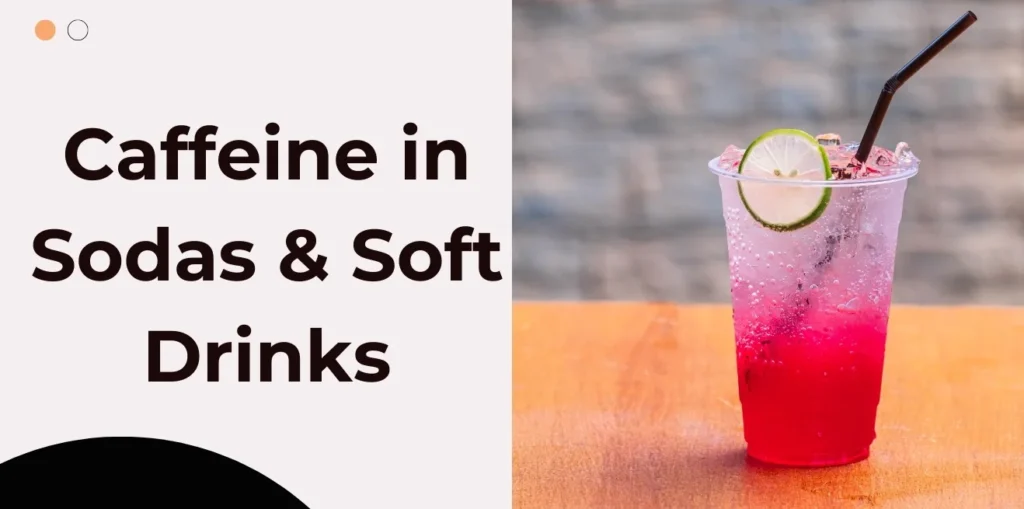
Sodas are often seen as a lighter option when it comes to caffeine. People may not think twice about drinking one with lunch or grabbing a can during the afternoon slump. But what many don’t realize is that some soft drinks can contain just as much caffeine as a cup of tea—or more. Depending on the brand and size, soda can give you a surprising energy boost.
How Much Caffeine Is in Colas?
Classic colas like Coca-Cola and Pepsi are the most well-known soft drinks that contain caffeine. A 12-ounce can of Coca-Cola has about 34 milligrams of caffeine, while Pepsi has a little more at around 38 milligrams. That might not seem like much, but for people who drink several cans a day, it adds up quickly. If you’ve ever wondered which one gives a stronger kick, our comparison of caffeine in Coke vs Pepsi lays out the numbers side by side.
Larger bottles or fountain drink servings increase the total caffeine as well. A 20-ounce bottle of Pepsi, for example, contains nearly 60 milligrams of caffeine—more than some cups of green tea.
Mountain Dew and High-Caffeine Sodas
Some sodas are made to be bolder and more energizing. Mountain Dew is a prime example. A 12-ounce can of Mountain Dew contains about 54 milligrams of caffeine, which is noticeably more than Coke or Pepsi. A 20-ounce bottle can push that number above 90 milligrams—similar to a small coffee.
Because of its bright flavor and heavy marketing, Mountain Dew is especially popular among teens and young adults. What surprises many people is that Mountain Dew can sometimes contain more caffeine than coffee, depending on the size and brew strength of the coffee in question.
The Dr Pepper Family and Other Soda Brands
Dr Pepper is another well-known soda that contains caffeine, though it’s often overlooked in these conversations. A regular 12-ounce can has around 41 milligrams of caffeine, putting it slightly above Coca-Cola. If you’re trying to track your caffeine intake across different brands, it helps to know how Dr Pepper compares to other sodas.
There are also unique flavors and regional favorites that fall under the soda category. One popular example is Baja Blast, a tropical-themed Mountain Dew variety found at Taco Bell and in limited retail releases. While it tastes fruity and smooth, Baja Blast does contain caffeine—about the same as regular Mountain Dew.
Other brands, like Barq’s Root Beer, also include caffeine, even though many root beers don’t. Always check the label, especially with lesser-known or specialty flavors, since assumptions can be misleading.
Are There Caffeine-Free Sodas?
Yes, many sodas are completely caffeine-free. These include:
- Caffeine-Free Coca-Cola and Pepsi (specific versions labeled as such)
- Sprite, 7Up, and Sierra Mist
- Root beers like A&W and Mug (unless noted otherwise)
- Orange sodas like Fanta or Sunkist (note: Sunkist Orange does have caffeine)
Caffeine-free sodas are a good choice for people who are sensitive to stimulants or trying to cut back later in the day. Just keep in mind that “light” or “clear” doesn’t always mean caffeine-free—reading the nutrition label is the best way to know for sure.
5. Caffeine in Chocolate Milk, Cocoa, and Other Surprising Sources
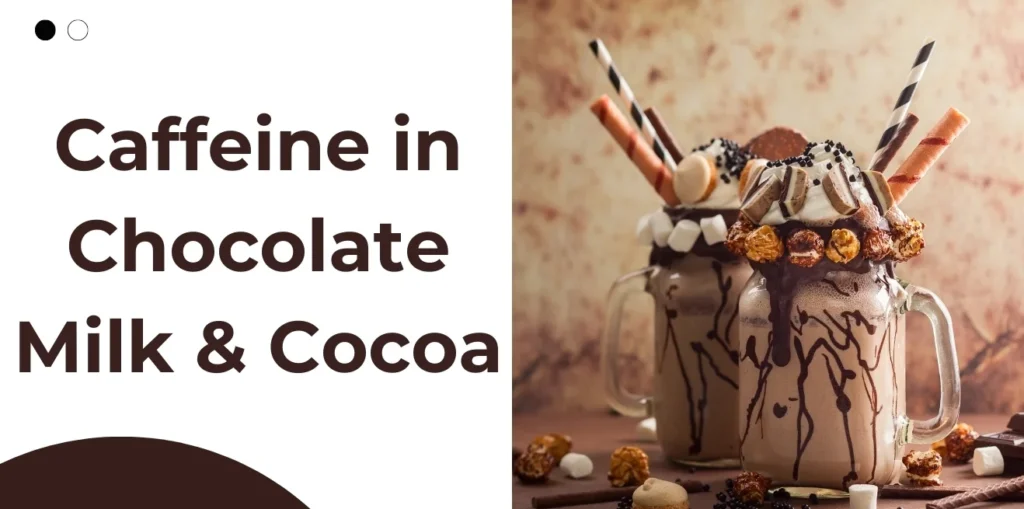
Most people don’t think of chocolate as a source of caffeine, but it naturally contains small amounts. That’s because cocoa beans—the main ingredient in chocolate—contain caffeine, just like coffee and tea plants. The darker the chocolate and the more cocoa powder it contains, the higher the caffeine level tends to be.
Chocolate milk usually has only a small amount of caffeine. A typical 8-ounce serving contains between 2 and 7 milligrams. That’s much lower than coffee or tea, but it can still add up if you drink it regularly. If a child or someone sensitive to caffeine drinks several servings a day, it might have a mild effect.
Hot chocolate, also made with cocoa powder, has similar caffeine levels. Most single servings range from 5 to 15 milligrams depending on the brand and how rich the drink is. If extra chocolate syrup or dark cocoa powder is added, the number can go higher.
Dark chocolate contains the most caffeine among chocolate products. A single ounce of dark chocolate can have anywhere from 12 to 25 milligrams, especially if it’s made with 70% or more cocoa. In contrast, milk chocolate is usually lower—about 5 to 10 milligrams per ounce.
These numbers may not seem high on their own, but if you’re already consuming caffeine from other sources, it’s useful to count these in. To see exact amounts from common brands and types, our guide on caffeine in chocolate milk and cocoa breaks it all down.
How Much Caffeine Is Too Much?
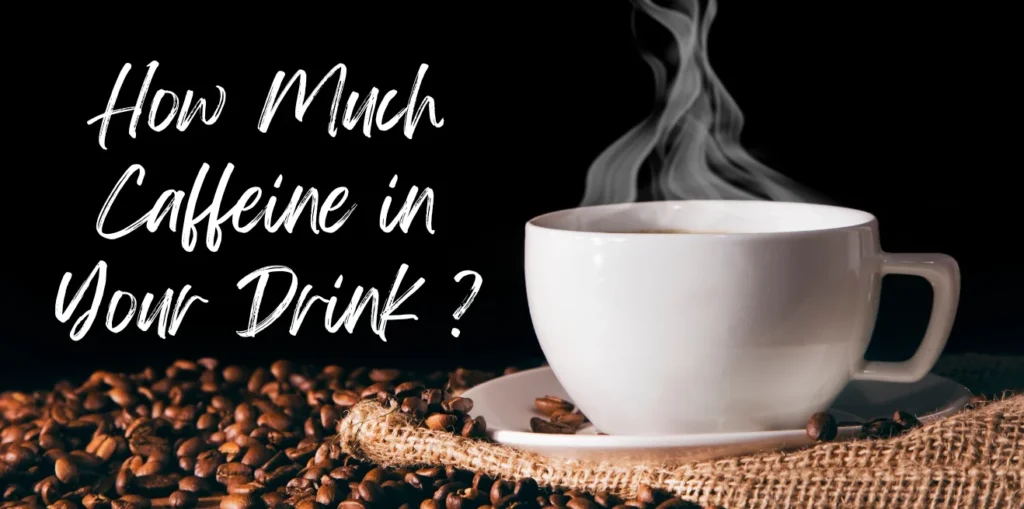
Caffeine can be helpful in small amounts, but too much can lead to serious side effects. While people react differently to caffeine, there are clear guidelines on what’s considered safe.
Safe Caffeine Limits by Age
According to the U.S. Food and Drug Administration (FDA), healthy adults can safely consume up to 400 milligrams of caffeine per day. That’s about four 8-ounce cups of coffee, or two strong energy drinks. But going above that can cause problems like restlessness, increased heart rate, or trouble sleeping.
Teens and children have lower limits. Experts recommend that teenagers stay under 100 milligrams a day, and that young children avoid caffeine entirely. Even small amounts can affect their sleep, focus, and mood. For a full breakdown of limits by age group, including recommendations for older adults, take a look at safe caffeine intake by age.
Signs You’ve Had Too Much
Some people can handle high levels of caffeine with no issues, while others feel the effects even after one cup. Common signs of overdoing it include:
- Headaches or dizziness
- Feeling jittery or anxious
- Fast heartbeat
- Difficulty falling or staying asleep
- Stomach upset
People with caffeine sensitivity may notice these symptoms even with moderate amounts. If you feel unwell after caffeine, it’s a sign to slow down and track your intake more closely.
For a closer look at how much is too much for adults and what warning signs to watch for, our article on safe caffeine limits goes into more detail.
Can Caffeine Affect Mental Health or Sleep?
Yes—especially if consumed later in the day. Caffeine stays in the body for hours, which means that even an afternoon coffee or soda can make it harder to fall asleep at night. It can also make anxiety symptoms worse for some people, particularly if they’re already feeling stressed or overwhelmed.
If you’re experiencing nervousness or sleep problems and suspect caffeine may be the cause, our page on how caffeine impacts anxiety and sleep explains what’s going on and how to manage it.
How Long Does Caffeine Stay in the Body?
On average, caffeine has a half-life of about 5 hours, which means it takes that long for half of it to leave your system. But it can take up to 10 hours or more for caffeine to fully wear off, depending on your body, age, and how fast your metabolism works.
That’s why timing matters. Drinking caffeine too late in the day can keep you awake longer than you expect. You can learn more about how long caffeine stays in your system and how to time your drinks for better sleep.
Caffeine Chart
If you want a quick way to compare the average amount of caffeine across popular drink types, the chart below is a helpful reference. Keep in mind that actual caffeine content can vary depending on brand, serving size, and how the drink is prepared—but this table gives you a good idea of what to expect.
| Drink Type | Average Caffeine (per serving) |
|---|---|
| Brewed Coffee (8 oz) | 95 mg |
| Espresso (1 oz shot) | 63 mg |
| Cold Brew (16 oz) | 200 mg |
| Black Tea (8 oz) | 45 mg |
| Green Tea (8 oz) | 30 mg |
| Matcha (8 oz) | 70 mg |
| Monster Energy (16 oz) | 160 mg |
| Bang/Reign (16 oz) | 300 mg |
| Coca-Cola (12 oz) | 34 mg |
| Mountain Dew (12 oz) | 54 mg |
| Dr Pepper (12 oz) | 41 mg |
| Chocolate Milk (8 oz) | 2–7 mg |
| Hot Cocoa (8 oz) | 5–15 mg |
| Dark Chocolate (1 oz) | 12–25 mg |
Health Limitation of Caffeine
Caffeine can help with focus, energy, and alertness—but like anything else, too much can lead to problems. Knowing your daily limit can help you avoid side effects and feel more in control of your energy levels.
How Much Caffeine Is Safe?
The FDA recommends that healthy adults consume no more than 400 milligrams of caffeine per day. That’s about four small cups of coffee or one large energy drink.
For teens and children, the limits are lower:
- Teens (13–18): No more than 100 mg per day
- Children (under 12): Caffeine is not recommended at all
These numbers aren’t just random—they’re based on how the body processes caffeine and how it can affect growth, sleep, and mental health. You can see a full breakdown of daily limits by age in our guide to safe caffeine intake for kids, teens, and adults.
What Happens When You Go Over the Limit?
Some people may be able to drink more than 400 mg without any issues, but others feel symptoms after just one or two caffeinated drinks. Signs you may be overdoing it include:
- Jitters or shakiness
- Racing heart
- Trouble falling asleep
- Nervousness or anxiety
- Upset stomach
If these sound familiar, it’s worth reviewing how much caffeine is too much and adjusting your daily intake.
Can Caffeine Affect Mental Health or Sleep?
Yes—especially if you’re sensitive to caffeine or drink it late in the day. Caffeine blocks the brain chemical that helps you feel sleepy, which is why even a mid-afternoon drink can affect your sleep at night. It may also increase symptoms of anxiety in some people, especially in high amounts.
If you’re wondering how caffeine may be affecting your rest or mood, our page on caffeine, anxiety, and sleep issues explains how it works and what to do about it.
Interactions with Medications or Health Conditions
Caffeine can also interact with certain medications. It may increase the effects of stimulants or reduce the effect of drugs meant to lower blood pressure or help with sleep. If you’re taking medication or have a heart condition, it’s a good idea to talk to your doctor about how much caffeine is safe for you.
For anyone wondering how long caffeine stays active in the body, we also explain how caffeine is metabolized and how that timeline may vary from person to person.
Caffeine Myths vs Facts
There’s a lot of confusion about caffeine, especially when it comes to what it can and can’t do. Let’s clear up a few of the most common myths.
- “Decaf means zero caffeine.”
Not true. Decaf coffee still contains a small amount—usually between 2 and 7 milligrams per cup. If you’re avoiding caffeine altogether, even decaf counts. You can learn more about how much caffeine is really in decaf coffee. - “Caffeine dehydrates you.”
While caffeine has a mild diuretic effect, regular users develop a tolerance. For most people, drinks like coffee or tea still count toward daily hydration. - “Caffeine is bad for your heart.”
In moderate amounts, caffeine is generally safe for healthy people. However, those with heart issues or sensitivity to stimulants should speak to a doctor. High doses can raise blood pressure or heart rate temporarily.
Conclusion
Caffeine is part of daily life for most people, but it’s easy to lose track of how much you’re actually consuming. From your morning coffee to a can of soda with dinner, every sip adds up. Understanding the caffeine content in your drinks can help you feel better, sleep better, and avoid unwanted side effects.
This guide covered coffee, tea, energy drinks, sodas, chocolate drinks, and more. If you’re curious about a specific drink—or just want to make smarter choices—feel free to explore the sections above.
Want to know how much caffeine is in your favorite drink?
Check the sections linked above, or compare everything side-by-side using our caffeine chart. It’s a simple way to stay informed and stay in control.
Frequently Asked Questions About Caffeine
Q.1 Does boiling coffee make it stronger?
Not exactly. Boiling water doesn’t increase the caffeine in coffee, but it can change the way it’s extracted. If you brew coffee with water that’s too hot—especially if it’s boiling—it may pull out more bitterness, but not necessarily more caffeine. Ideal brewing temperatures are usually between 195°F and 205°F. What really impacts the caffeine level is how much coffee you use, how long it brews, and the grind size. For example, cold brew coffee tends to be stronger because it steeps for many hours, not because of the temperature.
Q.2 What drink has the most caffeine overall?
Some energy drinks top the list. Drinks like Bang and Reign have around 300 milligrams of caffeine per can, making them some of the strongest widely available options. In comparison, a regular cup of coffee has around 95 milligrams. If you’re curious about the full list, check out which energy drinks have the most caffeine and how they compare to coffee and soda.
Q.3 Is caffeine safe during pregnancy?
Experts generally advise pregnant people to limit caffeine. The American College of Obstetricians and Gynecologists recommends keeping caffeine intake below 200 milligrams per day during pregnancy. That’s about one 12-ounce cup of coffee. Too much caffeine may increase the risk of miscarriage or low birth weight. It’s also important to remember that caffeine is in more than just coffee—tea, soda, energy drinks, and even chocolate can all contribute.
Q.4 When is the best time to consume caffeine?
For most people, the best time to have caffeine is in the morning or early afternoon. That’s when your natural energy levels may start to dip and when caffeine can help without affecting your sleep. Having caffeine late in the day—especially after 3 p.m.—can interfere with falling asleep, since caffeine can stay in your system for 5 to 10 hours. If you’re sensitive to caffeine, it’s best to stick to morning use only.

